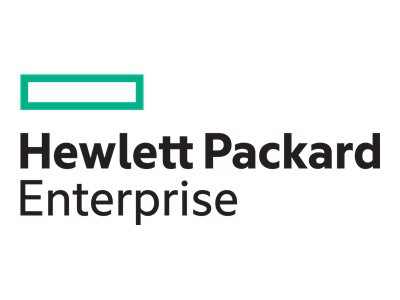The HPE OfficeConnect 1950 Switch Series has an intuitive Web-based interface for simple customization of network operation. It supports true-stacking, the aggregation switch supporting up to two devices, while the access switches allowing up to four devices, to be logically administered as a single entity, simplifying administration while supporting greater network redundancy. Models support both rack mounting and desktop operation. These switches have IPv4 and IPv6 operation, with Layer 2 switching as well as Layer 3 static routing. Other features include: link aggregation to boost link performance; VLANs, Access Control Lists, and 802.1X network login for enhanced security; and three versions of Spanning Tree Protocol (STP) for added network resiliency.
- Four-high true stacking simplifies administration of multiple devices
- Intuitive Web browser-based management
- Secure Web-management sessions with HTTPS / SSL
- SNMPv1, v2c, and v3
- Complete session logging
- Dual flash images
- Port mirroring
- Network Time Protocol (NTP)
- IEEE 802.1AB Link Layer Discovery Protocol (LLDP)
- Limited Command Line Interface (CLI)
- RMON
- Default DHCP client modes
Four-high true stacking simplifies administration of multiple devices
Create a single logical managed unit with up to four HPE OfficeConnect 1950 switches. Balance connections across multiple units with Link Aggregation (LACP) for enhanced network resiliency. Stack using affordable Cat 6a, or long distance fiber, or localized DAC cables.
Intuitive Web browser-based management
Allows for easy customization of the switch even by non-technical users.
Secure Web-management sessions with HTTPS / SSL
Encrypts and otherwise protects management sessions through HTTP Secure (HTTPS). Prevents snooping of sensitive management information such as passwords.
SNMPv1, v2c, and v3
Facilitates remote management of the switch, as the device can be discovered and monitored from an SNMP management station.
Complete session logging
Provides detailed information for problem identification and resolution.
Dual flash images
Provides independent primary and secondary operating system files for backup while upgrading.
Port mirroring
Enables traffic on a port to be simultaneously sent to a network analyzer for monitoring.
Network Time Protocol (NTP)
Synchronizes timekeeping among distributed time servers and clients, keeps timekeeping consistent among all clockdependent devices within the network so that the devices can provide diverse applications based on the consistent time.
IEEE 802.1AB Link Layer Discovery Protocol (LLDP)
Advertises and receives management information from adjacent devices on a network, facilitating easy mapping by network management applications.
Limited Command Line Interface (CLI)
Facilitates in the deployment and initial configuration of the unit. Supports troubleshooting actions as well.
RMON
Provides advanced monitoring and reporting capabilities for statistics, history, alarms, and events.
Default DHCP client modes
Simplify device deployment. Connect a switch to a network with a DHCP server and the device will obtain its IP address automatically with Plug-and-Play operation.





